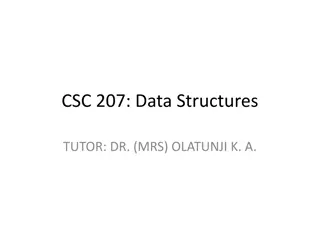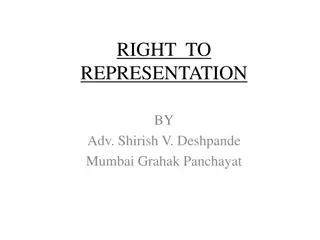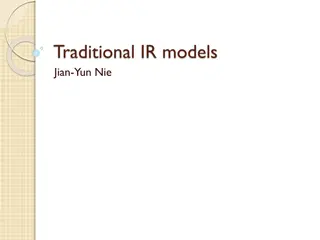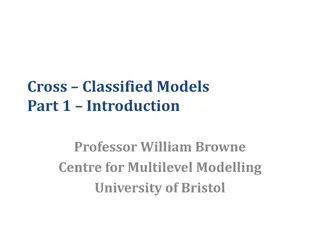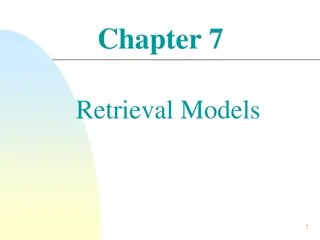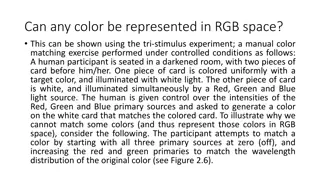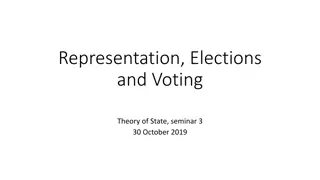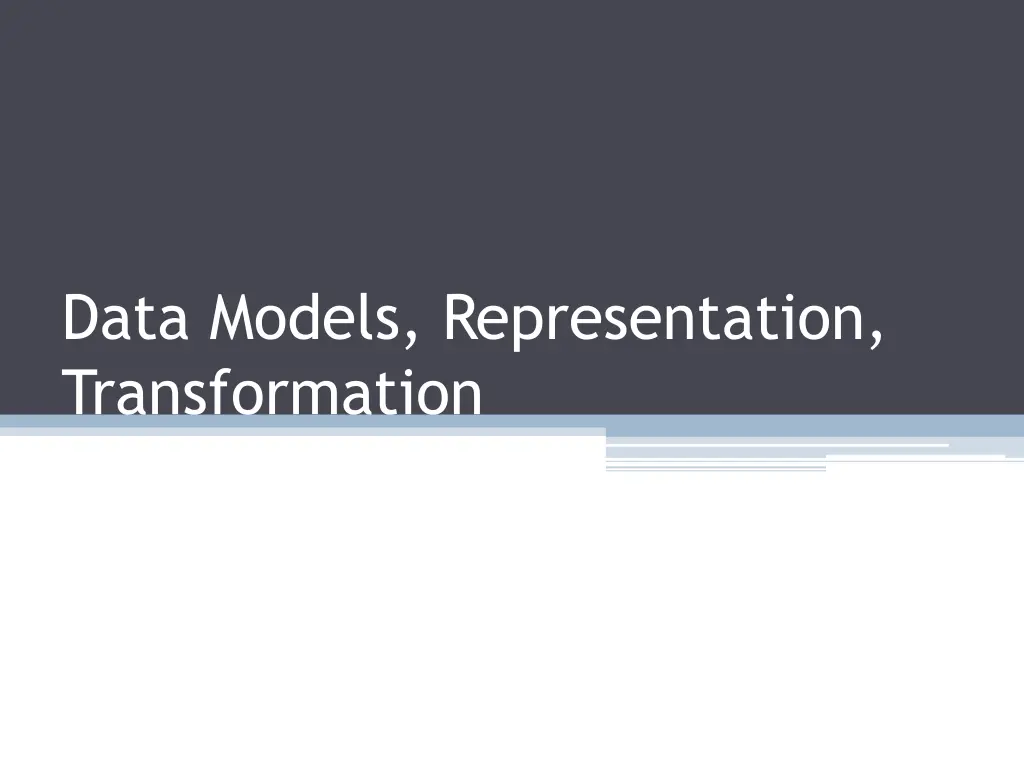
Understanding Data Models and Visualization Techniques
Explore the concepts of data models, representation, and transformation with examples and illustrations from the UNC Visualization Framework. Learn about entities, attributes, relationships, and the different types of data values. Discover the distinctions between data sets, data models, and conceptual models through practical examples. Dive into the basics of creating effective data models and visualizations for better understanding and communication.
Download Presentation

Please find below an Image/Link to download the presentation.
The content on the website is provided AS IS for your information and personal use only. It may not be sold, licensed, or shared on other websites without obtaining consent from the author. If you encounter any issues during the download, it is possible that the publisher has removed the file from their server.
You are allowed to download the files provided on this website for personal or commercial use, subject to the condition that they are used lawfully. All files are the property of their respective owners.
The content on the website is provided AS IS for your information and personal use only. It may not be sold, licensed, or shared on other websites without obtaining consent from the author.
E N D
Presentation Transcript
Data Models, Representation, Transformation
UNC Visualization Framework Given Human Abilities Visual perception Cognition Memory Motor skills Design Principles Visual display Interaction Chosen Imply Inform design Design Process Iterative design Design studies Evaluation Context User Tasks Data types Data Model Displays Visualization Techniques Constrain design Graphic adapted from Melanie Tory
UNC Models Talk about Data Set vs Data Models vs Conceptual Models Examples to make clear. Reality: you are citizen of NC and have money Conceptual model: citizens of North Carolina and their fiscal information. DataSet: your SSN, financial information Data Model contains information on specific attributes of citizens of NC, with raw data mapped to specific data types. SSN = 9 digits Name = 80 chars Address = 120 chars {financial institution/amount}* = FinanceID, currency
UNC Adapted from Stone & Zellweger Basic Elements of a Data Model A data model represents some aspect of the world Data models consist of these basic elements: Entities (objects) Attributes (values/characteristics of Entities) Relationships between entities
UNC Adapted from Stone & Zellweger Basic Elements: Entities Entities are objects of interest Places, people, movies, animals Entities allow you to define and reason about a domain Business Family tree University Scientific model
UNC Adapted from Stone & Zellweger Basic Elements: Values Attributes are properties of Entities Two major types Quantitative Categorical (several classes) Appropriate visualizations often depend upon the type of the data values
UNC Adapted from Stone & Zellweger Basic Elements: Relations Relations relate two or more Entities leaves are part of a plant a department consists of employees A person is related to another person
UNC Common Data Types Categorical (unordered set, supports =) Ordinal (ordered set, supports <, >, =) Interval (starts out as quantitative, but is made categorical by subdividing into ordered ranges) Continuous (ordered and proportional, supports general arithmetic operators)
UNC Categorical unordered set Operators: = (equality) Also know as Nominal Examples Eye Color Fruits Directions: East, West, South, North Symbols Colors Music Genre
UNC Ordinal ordered set Operators: =, <, > Also know as Ordered Examples Low, Medium, High Cold, Warm, Hot First-born, second-born, third-born,
UNC Interval Boxing Weight Classes Months: Jan, Feb, Mar, Apr, Binned numbers 0-9, 10-19, 20-29, Women s dress sizes
UNC Continuous Proportional, ordered set Operators: =, <, >, *, /, % Also know as Quantitative, Ratio Examples Temperature Weight Pressure Population Number of words in document Any quantities properly represented by integers or rational numbers
UNC Dimensions of Data Type 1D (univariate) {eye color} of students 2D (bivariate) {eye color, hair color} of students 3D (trivariate) {eye color, hair color, height} of students nD (multivariate), n different attributes, for example description of cereal (homework example).
UNC Other types of data? Class suggest
UNC Other data types Spatial/cartographic 1D: position on line 2D: Surface Map (surface of earth, Longitude/latitude, GPS, GIS) 3D (Medical image, cloud volume, ocean contents) Higher dimensions! Time (any other data type sampled over time) Abstract Data Structures (information constructs) which have implicit visual structures Trees (hierarchies) Networks (general graphs) What else??
UNC Relational Databases Show relational database tables representing the data values, in parallel with conceptual model. Company database
UNC CUT-DDV Framework Dataset Processed Data Represented in Data Model Mapping to Data Model
UNC CUT-DDV Framework Display Visualization Techniques Map to Display(s) Filter, Transform, Modify
UNC Data Processing Usually you will start with given dataset in a structured format (database tables). However, you may have control over the acquisition of the raw data, and the mapping of raw data to the base data types in the data model. Then you have (potentially interactive) control over Transformations (how to produce an output form given input data values) Filtering (choosing what to data values to display) Extractions (selecting a subset to save out)




